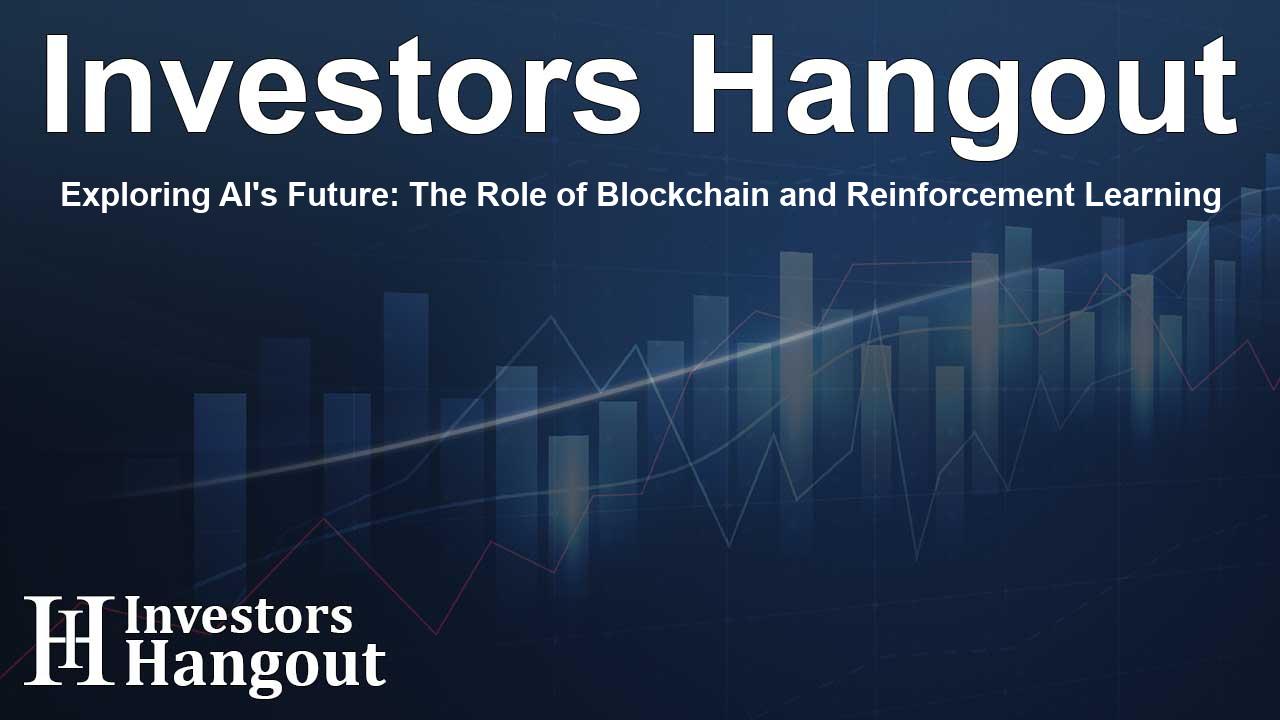Exploring AI's Future: The Role of Blockchain and Reinforcement Learning

Driving Innovation with Reinforcement Learning and Blockchain
WiMi Hologram Cloud Inc. (NASDAQ: WiMi) is taking significant steps forward in integrating cutting-edge technology into the evolving landscape of artificial intelligence and blockchain. By marrying reinforcement learning (RL) with blockchain strategies, the company aims to improve the model aggregation process, enhance data security, and drive overall efficiency within its frameworks.
Understanding Reinforcement Learning in a Blockchain Context
Reinforcement Learning represents a pivotal approach in machine learning, giving systems the capability to learn optimal behaviors by interacting with their environment. This learning paradigm adapts particularly well within a blockchain federated learning framework, where models can be optimized dynamically. This enables the efficient timing of model aggregations, participant selection for data participation, and minimization of transaction costs.
Addressing Data Bias and Aggregation Timing
In a federated learning scenario, participants often work with highly variable datasets, leading to challenges around data bias. To combat this issue, the RL algorithms enhance decision-making about when to upload model updates and which models to aggregate, based on prevailing data distributions. This strategic approach improves the balance between having timely information and minimizing data bias, thus maintaining the quality of learning outcomes.
Predicting Network Conditions and Resource Management
The operational costs associated with blockchain activities—like computational resource usage and bandwidth—are critical considerations in federated learning. With RL, these costs can be effectively managed by predicting network performance and resource availability. Consequently, WiMi can modulate how often and at what scale model updates are aggregated, ensuring the learning process remains cost-effective while maximizing performance.
Broad Applications Across Industries
The future will see blockchain-based systems integrating RL making substantial impacts in multiple fields, including healthcare, finance, and the Internet of Things (IoT). In healthcare, this advanced framework could streamline data sharing among various stakeholders, enabling accelerated advancements in diagnostic and treatment methodologies while safeguarding patient privacy. Likewise, in finance, institutions could leverage this technology to develop more secure risk assessment models, thereby enhancing integrity in financial evaluations.
Shaping the Future with Innovative Technologies
WiMi’s research emphasizes the confluence of artificial intelligence, blockchain technology, and reinforcement learning as a profound driver of innovation. This fusion not only addresses current challenges in traditional federated learning systems such as trust and security but also sets the stage for broader applications that will enhance efficiency across various industries. With ongoing research, WiMi is committed to unlocking the vast potential these technologies offer, paving the way for more practical applications that will significantly influence market trends.
About WiMi Hologram Cloud
WiMi Hologram Cloud, Inc. (NASDAQ: WiMi) stands at the forefront of the holographic technology sector, providing diverse solutions ranging from augmented reality (AR) automotive applications to holographic software development. Their commitment to innovation has positioned them as a thought leader in the industry, offering services that cater to a broad array of technologies, including 3D holographic pulse LiDAR and holographic communication systems.
Frequently Asked Questions
What is reinforcement learning?
Reinforcement learning is a machine learning approach that enables systems to learn optimal strategies by interacting with their environment.
How does WiMi integrate RL with blockchain?
WiMi utilizes reinforcement learning to optimize model aggregation, participant selection, and transaction cost management within blockchain-based federated learning frameworks.
What industries can benefit from this technology?
Key industries include healthcare, finance, and the Internet of Things, which can leverage this technology for improved security and efficiency.
What challenges does federated learning face?
Challenges include data bias, outdated information affecting learning performance, and high transaction costs associated with blockchain activities.
What does WiMi offer in terms of holographic technology?
WiMi provides a comprehensive range of holographic solutions, including AR applications, holographic sensors, and cloud software solutions that cater to various sectors.
About Investors Hangout
Investors Hangout is a leading online stock forum for financial discussion and learning, offering a wide range of free tools and resources. It draws in traders of all levels, who exchange market knowledge, investigate trading tactics, and keep an eye on industry developments in real time. Featuring financial articles, stock message boards, quotes, charts, company profiles, and live news updates. Through cooperative learning and a wealth of informational resources, it helps users from novices creating their first portfolios to experts honing their techniques. Join Investors Hangout today: https://investorshangout.com/
Disclaimer: The content of this article is solely for general informational purposes only; it does not represent legal, financial, or investment advice. Investors Hangout does not offer financial advice; the author is not a licensed financial advisor. Consult a qualified advisor before making any financial or investment decisions based on this article. The author's interpretation of publicly available data shapes the opinions presented here; as a result, they should not be taken as advice to purchase, sell, or hold any securities mentioned or any other investments. The author does not guarantee the accuracy, completeness, or timeliness of any material, providing it "as is." Information and market conditions may change; past performance is not indicative of future outcomes. If any of the material offered here is inaccurate, please contact us for corrections.